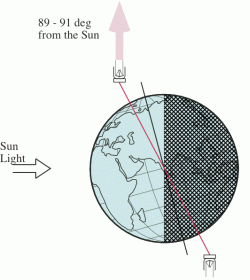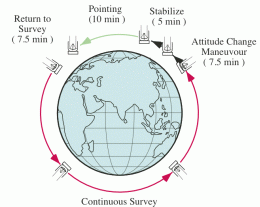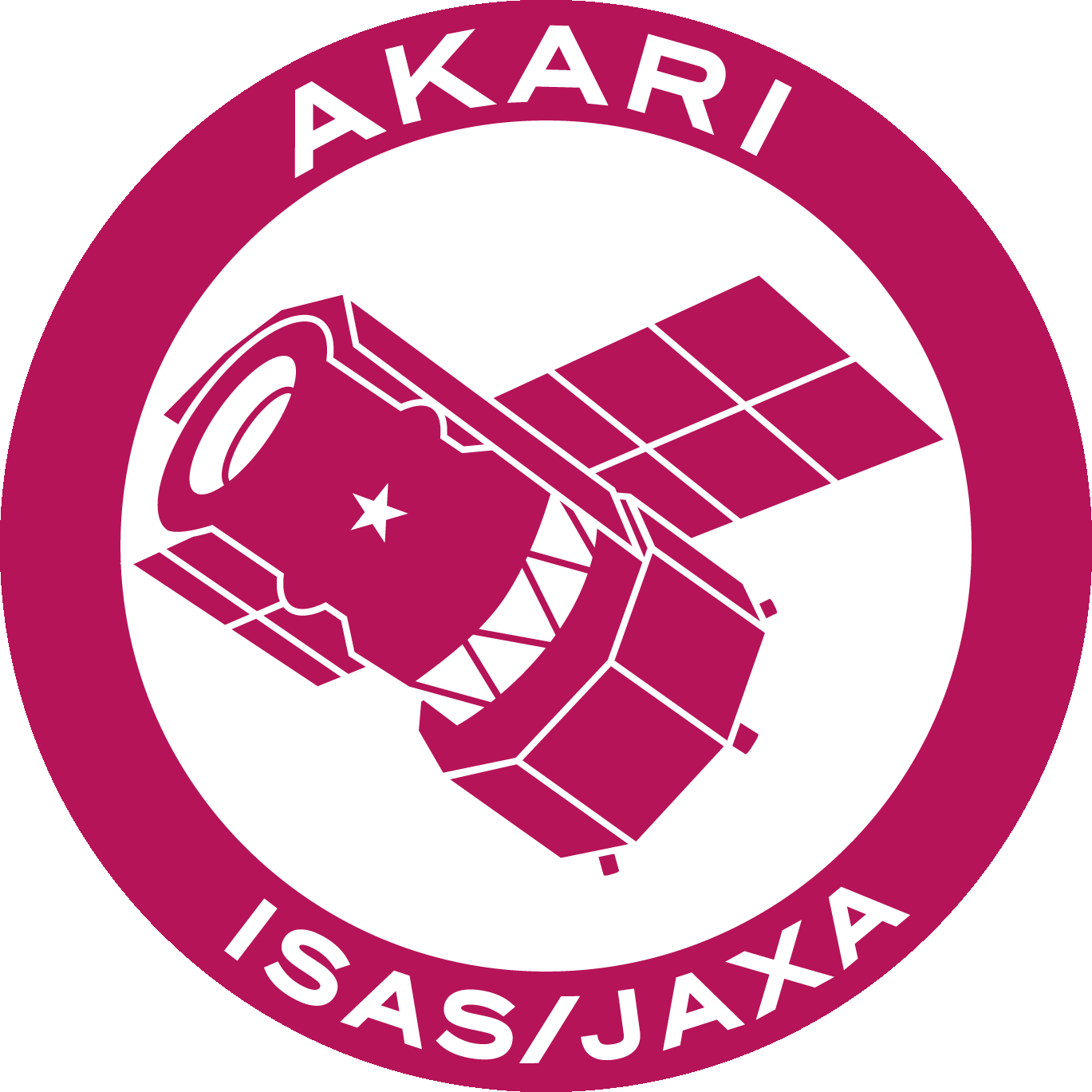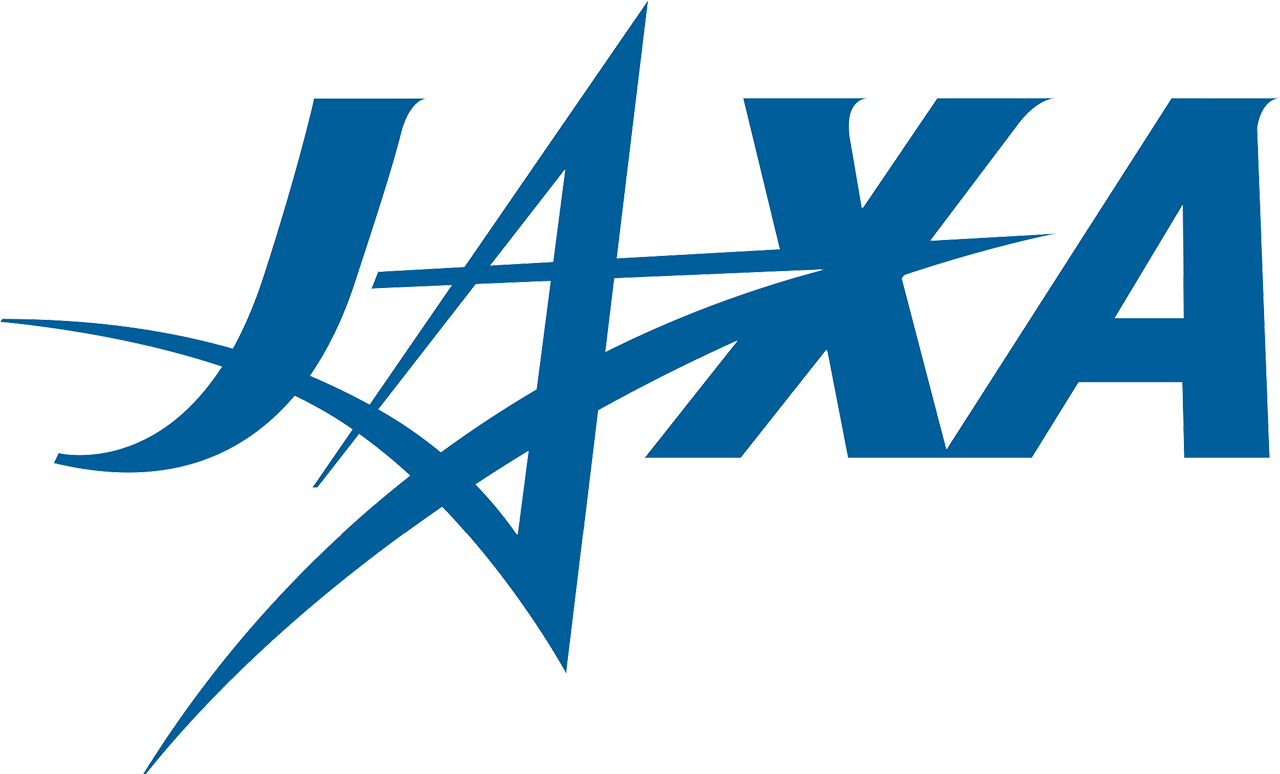Satellite Operation and Observations
Orbit and Attitude Control Mode
The orbit of AKARI was a Sun synchronous polar orbit with an altitude of 750 km. AKARI went around the Earth above the twilight zone and passed over the North and South Poles. The orbital period was approximately 100 minutes.
Observations with AKARI were performed in two attitude control modes; the survey mode and the pointing mode.
Survey Mode

Survey mode was the basic observation mode of AKARI. The attitude of the satellite was always set so that the direction of the telescope was perpendicular to the directions of the Sun and the Earth. Therefore the telescope spun and scanned the sky along a great circle as the satellite went around the Earth. The direction of the Sun from the Earth rotated once in a year. Consequently, AKARI was able to make an all-skyThere were gaps in the surveyed areas due to the Moon and so on. These gaps were tried to be filled after a half year. survey in half a year in the survey mode.
Pointing Mode

Pointing mode was used in the case when an observer requested a long exposure or spectroscopy toward a fixed location. The telescope could not point in an arbitrary direction at any time, because the telescope could not look in the direction from which the light of the Sun and/or the Earth come. Due to this restriction, any exposure time was less than ten minutes for one observationPointing observations were made three times per an orbital revolution at maximum..
Observation Period
The operational life of AKARI ended when the liquid Helium, the principal coolant onboard AKARI, ran out. The lifetime was about 550 days after the launch.
The operation plan was as follows. The first two months of the mission was the performance verification (PV) phase. In the following a half year, the FIS all-sky survey was preferentially performed (Phase 1). After Phase 1, AKARI observed various objects in the pointing mode in addition to complementing the missed areas from Phase 1, until the liquid Helium was consumedAKARI was equipped with mechanical coolers in addition to liquid Helium. Consumption of the Helium was suppressed by using mechanical coolers.. The near-infrared camera of the IRC was able to continue observations after the Helium expired (Phase 3), because the near-infrared camera was able to be used at the temperature kept by the mechanical coolers only.





